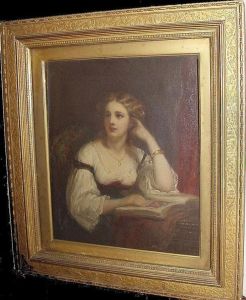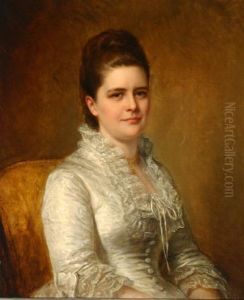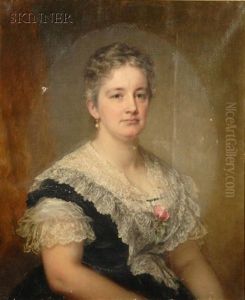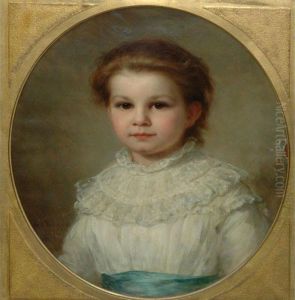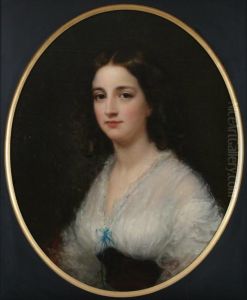George Augustus Baker Jnr. Paintings
George Augustus Baker Jr. was an American portrait painter known for his realistic portrayals and meticulous attention to detail. Born in New York City in 1821, Baker grew up in an environment rich with the burgeoning American art scene of the early 19th century. He showed an early interest in art, which was encouraged by his family, and he pursued his passion with dedication.
Baker's education in art began under the tutelage of his father, George Augustus Baker Sr., who was also an artist, albeit less known. This early mentorship fostered in him a deep understanding of artistic fundamentals. To further his education, Baker traveled to Europe, a common practice among aspiring American artists of the time. While in Europe, he studied the works of the Old Masters, absorbing the techniques that would later influence his portrait work. He spent significant time in Paris and Rome, centers of art that were crucial in shaping his aesthetic sensibilities and skills.
Upon returning to the United States, Baker quickly established himself as a portrait painter in New York City. His portraits were sought after by the elite of society, who desired to be immortalized by his hand. Baker's ability to capture the character and essence of his sitters, combined with his refined technique, set him apart from his contemporaries. He was particularly adept at rendering textures and details in clothing and jewelry, which added a layer of richness to his portraits.
Throughout his career, Baker was an active member of the American art community. He was involved with the National Academy of Design, an institution that played a pivotal role in the development of American art in the 19th century. His contributions to the Academy and his influence on younger artists were significant, helping to shape the direction of American portraiture during his time.
George Augustus Baker Jr. passed away in 1880, leaving behind a legacy of work that continues to be appreciated for its beauty and precision. His portraits provide a window into an era, capturing the personalities and fashions of 19th-century America with elegance and accuracy. Though not as widely known today as some of his contemporaries, Baker's work remains an important part of American art history, celebrated for its contribution to the tradition of portrait painting.
